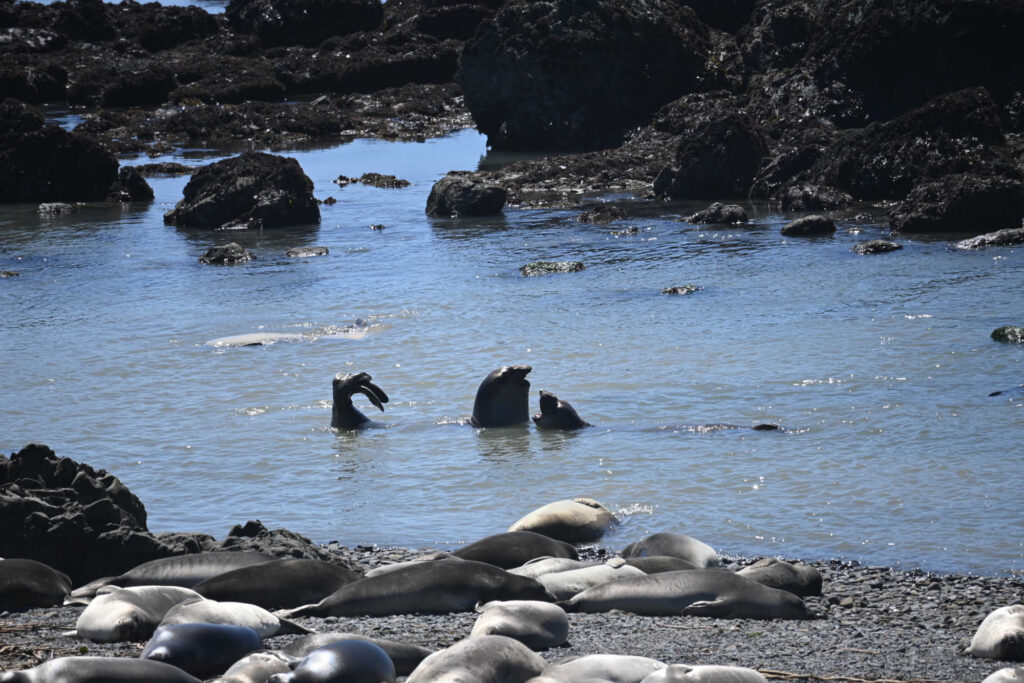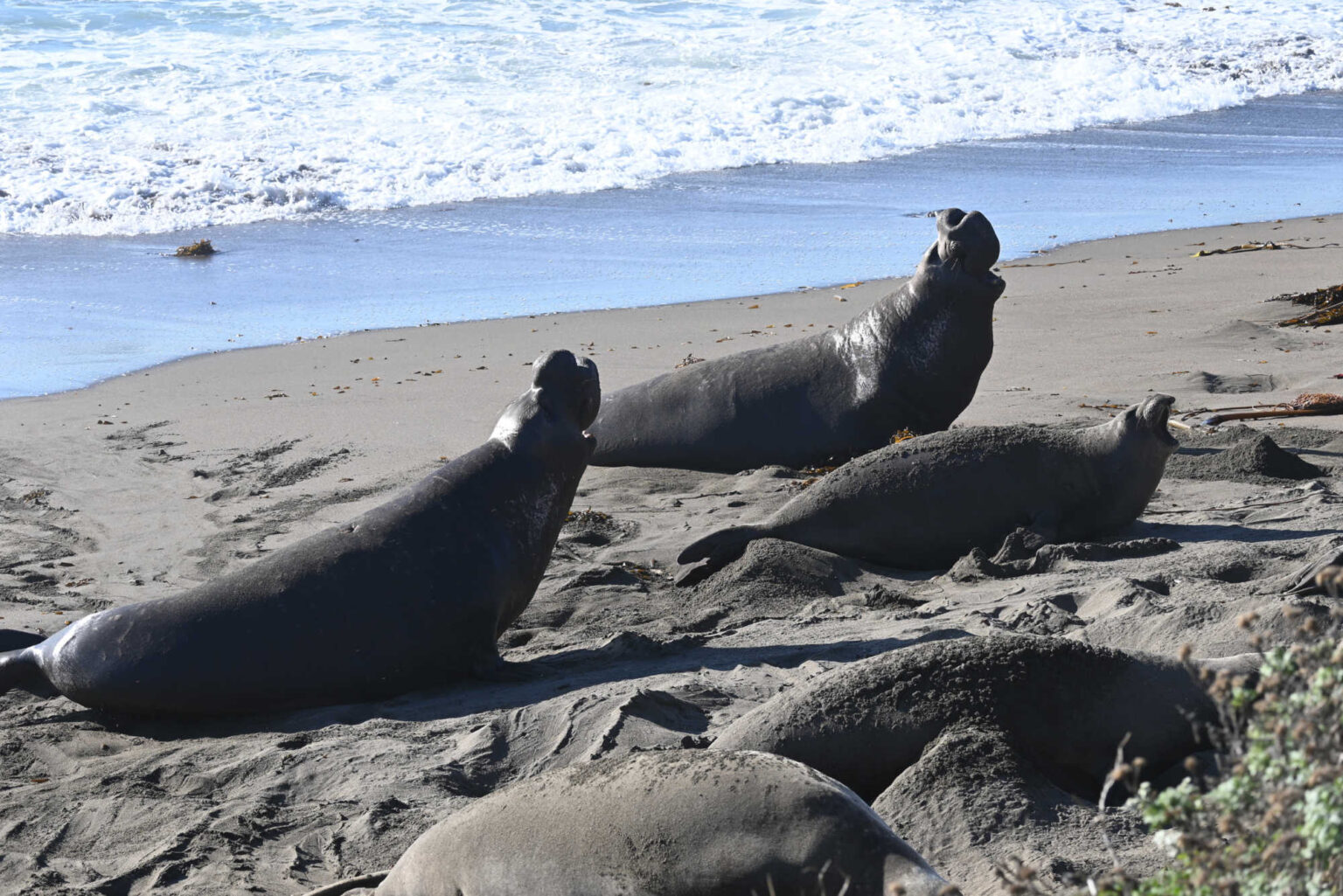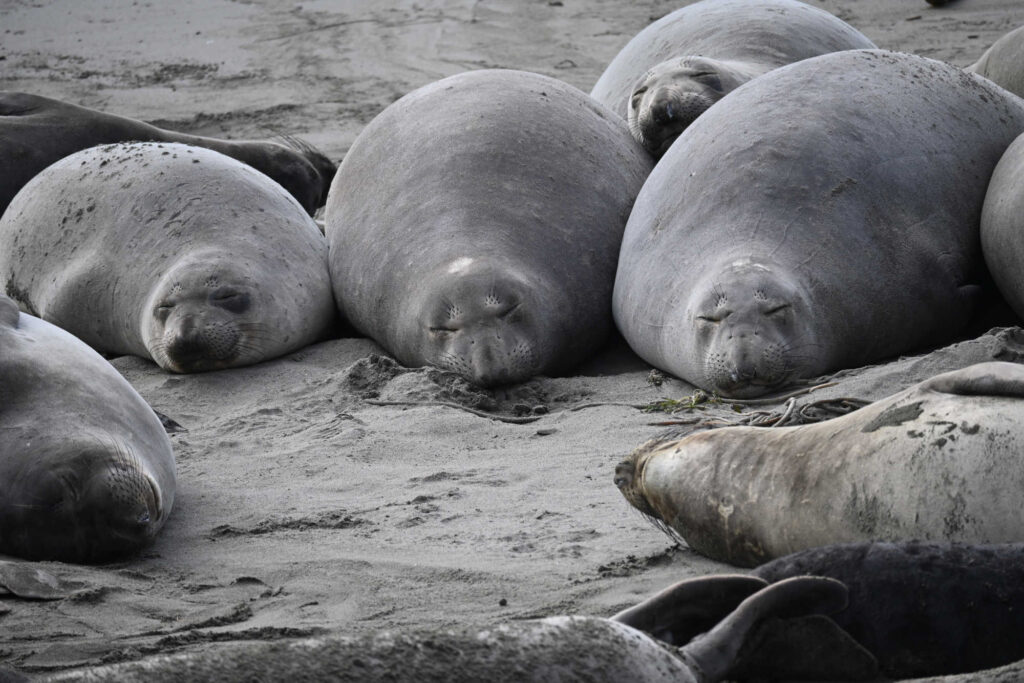A Remarkable History
Close to Extinction
Beginning in the 1700s, the maritime fur trade in the Pacific Northwest devastated marine mammal populations, including sea otters, whales, dolphins, seals, and sea lions. Among these, northern elephant seals were hunted nearly to extinction for their oil-rich blubber, which was used to produce lamp oil and lubrication. By 1892, fewer than 100 elephant seals remained on Guadalupe Island off the coast of Baja California. By 1900, many species, including the northern elephant seal, were thought to be extinct.
Elephant Seals Return to Piedras Blancas
By 1982, elephant seals had migrated further south along California’s coastline to Big Sur, over 100 miles south of Año Nuevo. In 1990, they were observed near the Piedras Blancas Lighthouse. By spring 1991, nearly 400 seals hauled out there to molt. The colony’s growth accelerated quickly: in February 1992, the first pup was born at Piedras Blancas; by 1993, about 50 pups were born; by 1995, that number had grown to 600; and by 1996, nearly 1,000 pups were born as the colony expanded along beaches adjacent to Highway 1.


Protected Status
In 1922, Mexico granted elephant seals protected status, followed shortly by the United States. Under this protection, the northern elephant seal population began to recover and expand northward along the California coast to areas such as the Channel Islands, Año Nuevo Island (near Santa Cruz), and the Farallon Islands off San Francisco.
The first elephant seals were spotted on Año Nuevo Island in 1955, with the first pup born there in 1961. By 1965, males began appearing on the mainland. In January 1975, a pup was born on mainland California for the first time.
A New Human Threat
As elephant seals reclaimed beaches once frequented by humans, conflicts arose. The Marine Mammal Protection Act of 1972 mandated protection for all marine mammals; however, public fascination with these massive creatures drew thousands of visitors to Highway 1. Many parked illegally and trespassed onto private property to view the seals up close. Visitors often descended bluffs and approached resting seals despite clear signage prohibiting such behavior. Some even provoked seals for reactions or photo opportunities. Wildlife management agencies struggled to address these seal-human interactions as they lacked effective solutions.
The Formation of Friends of the Elephant Seal
In response to these challenges, Friends of the Elephant Seal (FES) was established in 1997 with a mission to educate visitors about elephant seals and other marine life along California’s central coast. FES organized and trained docents to assist visitors at viewing areas while prioritizing public safety and respect for wildlife.
The Piedras Blancas Rookery area became state property under California State Parks jurisdiction in 2006. In 2011, FES formalized its partnership with State Parks by becoming a cooperating association. Docents at the rookery transitioned into Park Volunteers under FES’s continued training and education programs. Additionally, FES opened a Visitors Center dedicated to enhancing public understanding of elephant seals.
Since then, improvements have been made at viewing areas: boardwalk overlooks constructed by the California Conservation Corps (with support from the California Coastal Conservancy), interpretive signs provided by State Parks, and handicapped-accessible parking lots funded by Caltrans.

Today
The recovery of the Northern Elephant Seal is a conservation success story. During pupping and breeding seasons, these seals typically return to their natal beaches. As more pups are born each year, colonies continue to expand. At Point Piedras Blancas alone, over 25,000 elephant seals now occupy an eight-mile stretch of coastline north and south of the rookery—and their numbers keep growing.
This remarkable population resurgence underscores the importance of FES’s educational initiatives and docent programs at Piedras Blancas Rookery. By fostering awareness and respect for these extraordinary animals among visitors from around the world, FES continues its vital role in protecting both wildlife and public safety along California’s coast.

